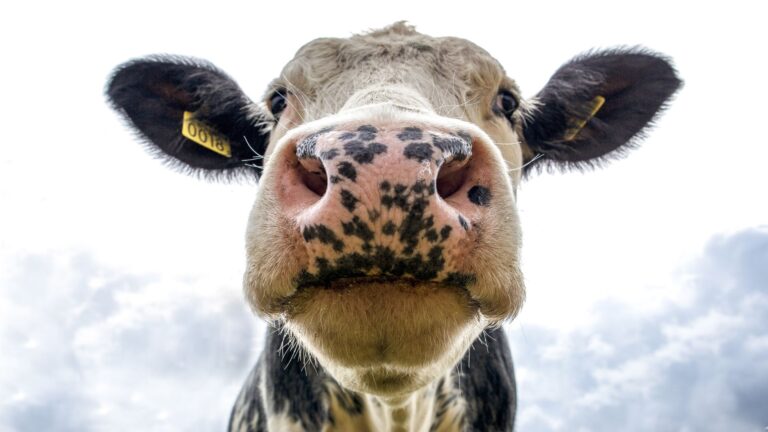13 Elephant Behaviors Every Safari Goer Should Know Before Their Next Encounter
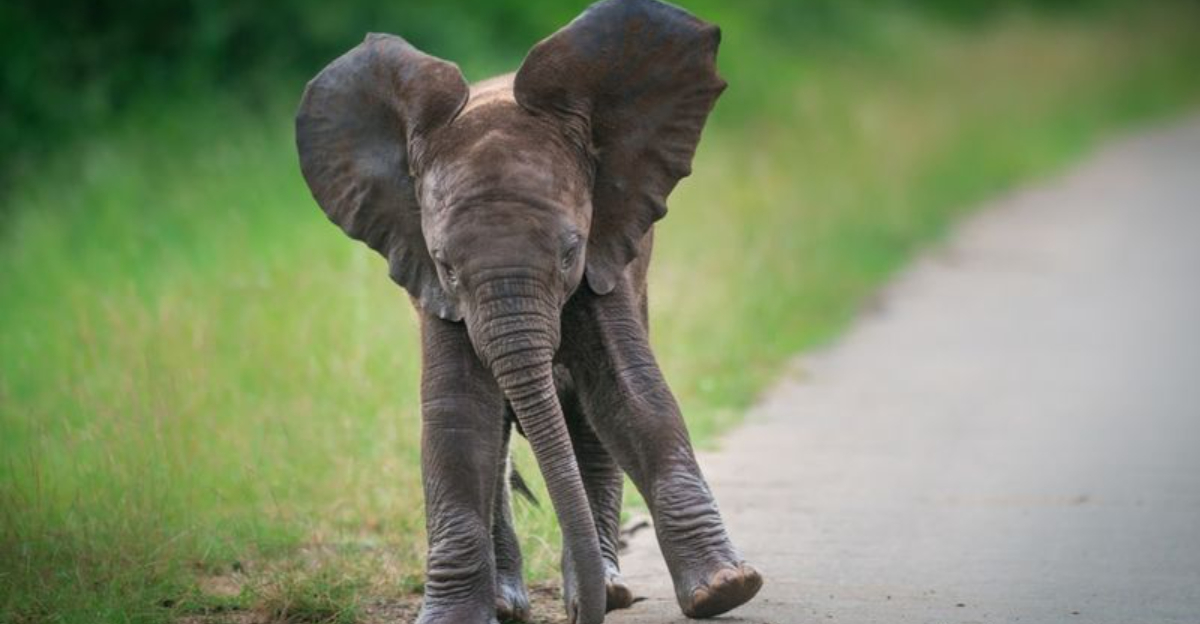
Elephants are the magnificent giants of the African savanna, capturing our hearts with their intelligence and complex social structures.
Watching these gentle behemoths in their natural habitat is a breathtaking experience that every safari enthusiast dreams about.
Before your next wildlife adventure, understanding these key elephant behaviors will not only enhance your viewing experience but also help you stay safe during these magical encounters.
1. Understanding Elephant Herd Dynamics

Female elephants form tight-knit family groups led by the oldest and wisest female. These bonds last a lifetime, with members protecting, teaching, and supporting each other through challenges.
Males typically leave the herd around puberty to live alone or in bachelor groups. During a safari, you’ll likely encounter these family units moving together in perfect synchronization.
2. The Importance Of Elephant Matriarchs
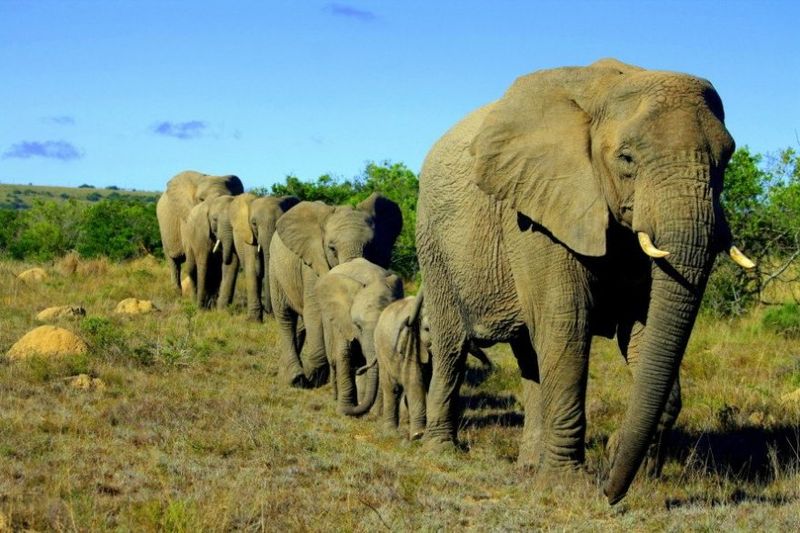
Matriarchs aren’t just leaders—they’re the memory keepers of the herd. Often 40-50 years old, these wise females remember ancient migration routes and water sources during droughts.
You can identify the matriarch as the largest female who walks at the front or rear of the group. Watch how others follow her lead and how she makes critical decisions that affect the entire family’s survival.
3. Elephants’ Communication Methods
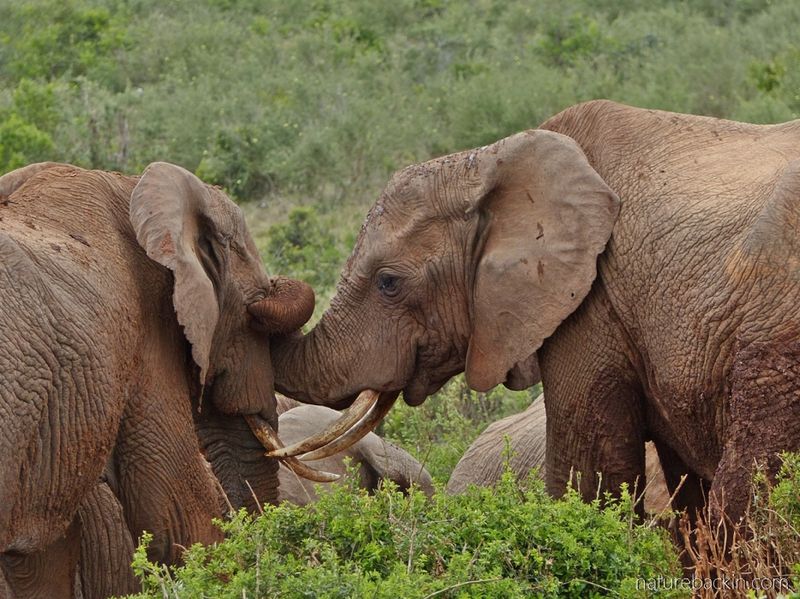
Beyond their trumpeting calls, elephants communicate through rumbles so low humans can barely hear them. These vibrations travel through the ground for miles, allowing separated herds to coordinate movements.
During your safari, notice subtle trunk touches, head positions, and ear movements—all part of their rich communication system. Sometimes you might feel vibrations in your vehicle before even hearing the elephants!
4. What It Means When Elephants Flap Their Ears

Those massive ears serve as natural air conditioners! Blood vessels close to the skin surface cool as elephants flap their ears, reducing body temperature by up to several degrees.
Rapid ear flapping often signals that an elephant is hot or agitated. If accompanied by an erect tail or forward-facing ears during your safari, it might indicate stress—a sign to give them space.
5. The Significance Of Trunk Movements
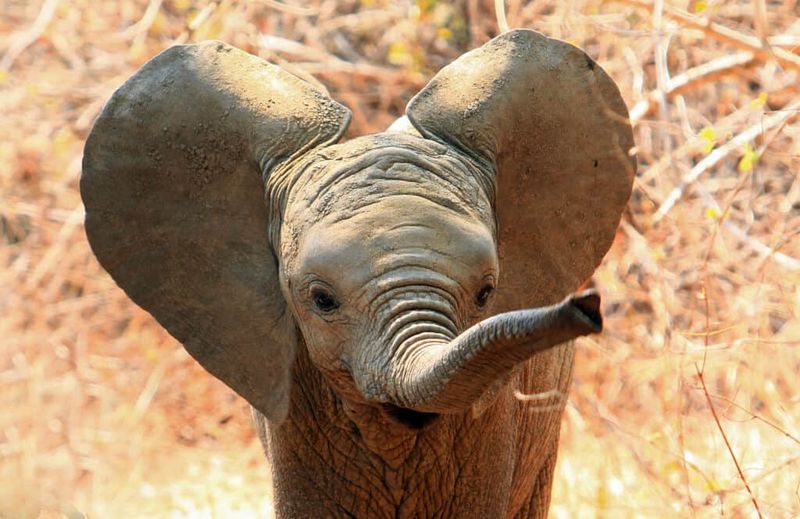
An elephant’s trunk contains over 40,000 muscles and can lift objects weighing up to 700 pounds. This remarkable appendage serves as nose, hand, voice box, and drinking straw all in one!
A raised trunk indicates curiosity or alarm as they’re sniffing the air for information. Trunks curled inward often signal contentment, while extended toward you might show interest or assessment of potential threat.
6. When Elephants Charge: What It Really Means
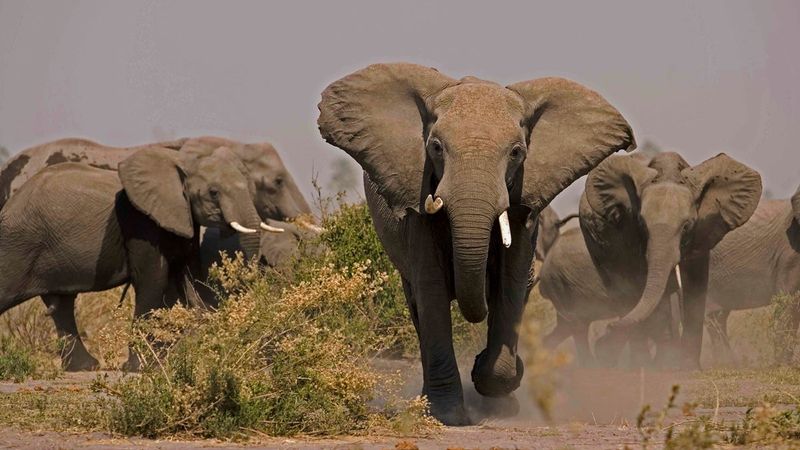
Most elephant charges are bluffs—warning displays rather than genuine attacks. They’ll often stop short after a short rush forward, accompanied by trumpeting and dust-kicking.
Real charges happen with ears pinned back (not spread wide), trunk tucked in, and a silent, determined approach. Safari guides recognize these subtle differences to keep you safe while respecting these magnificent animals’ boundaries.
7. How Elephants Protect Their Young
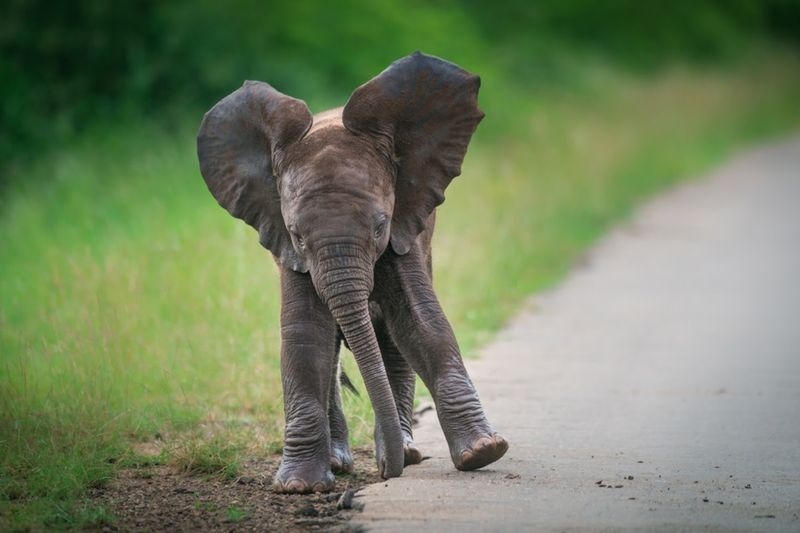
Baby elephants are vulnerable to predators, so herds form protective circles around calves when threatened. The youngest members stay in the center while adults face outward, creating a formidable defensive wall.
Mothers are remarkably attentive, using their trunks to guide wobbly calves and even helping them up hills. This touching behavior showcases the deep family bonds that define elephant society.
8. The Role Of Dust Bathing
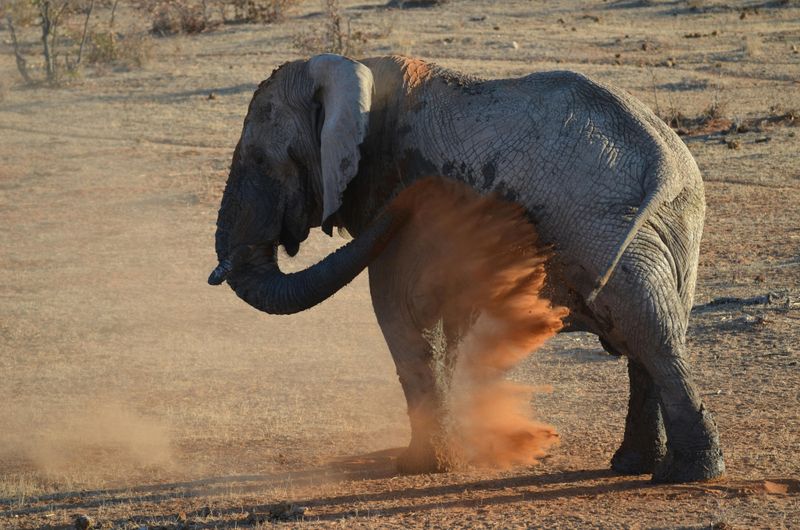
That cloud of dust isn’t just for show! Elephants toss soil onto their backs as a natural sunscreen and insect repellent.
The dust forms a protective layer against parasites and helps heal skin irritations. During your safari, you might witness this spectacular display as they rhythmically throw trunkfuls of dirt over their massive bodies, sometimes followed by a satisfying scratch against a tree.
9. Why Elephants Are Often Found Near Water
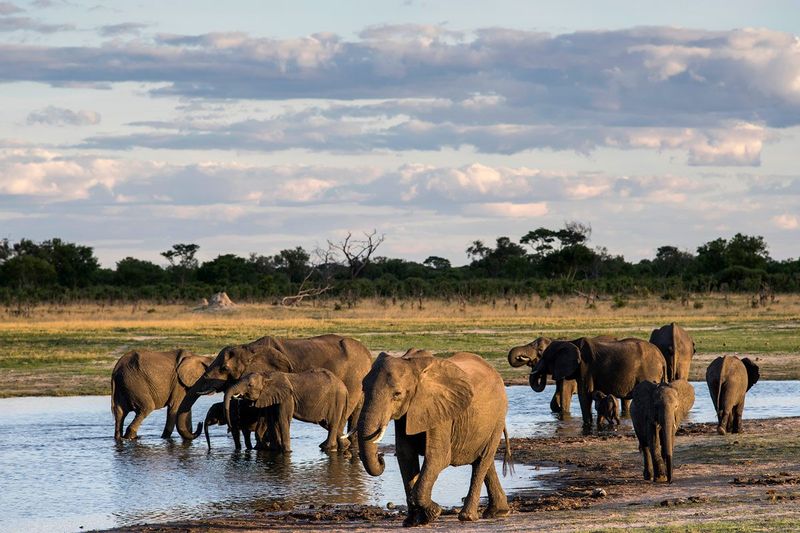
Water isn’t just for drinking—it’s central to elephant social life. These intelligent creatures need up to 50 gallons daily and use water for cooling, playing, and strengthening family bonds.
Watching elephants at a waterhole offers safari-goers prime behavior-viewing opportunities. Young calves splash playfully while adults spray water over their backs or simply enjoy standing knee-deep during hot afternoons.
10. Elephants’ Playful Behavior: Not Just For Babies
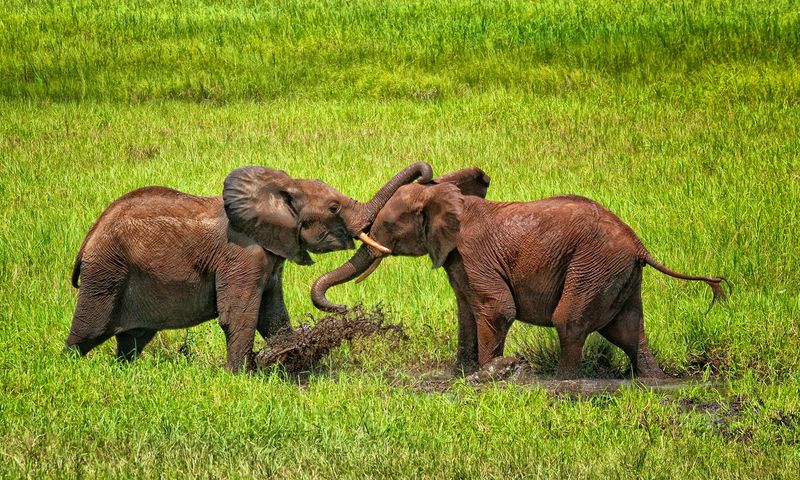
Contrary to what you might expect, adult elephants love to play too! They’ll splash in water, toss objects with their trunks, and even engage in gentle sparring matches.
This playfulness helps strengthen social bonds and develop crucial skills. During your safari, witnessing elephants at play—sliding down muddy riverbanks or playfully chasing birds—offers a heartwarming glimpse into their emotional complexity.
11. The Meaning Of Elephants “Mourning” Their Deceased
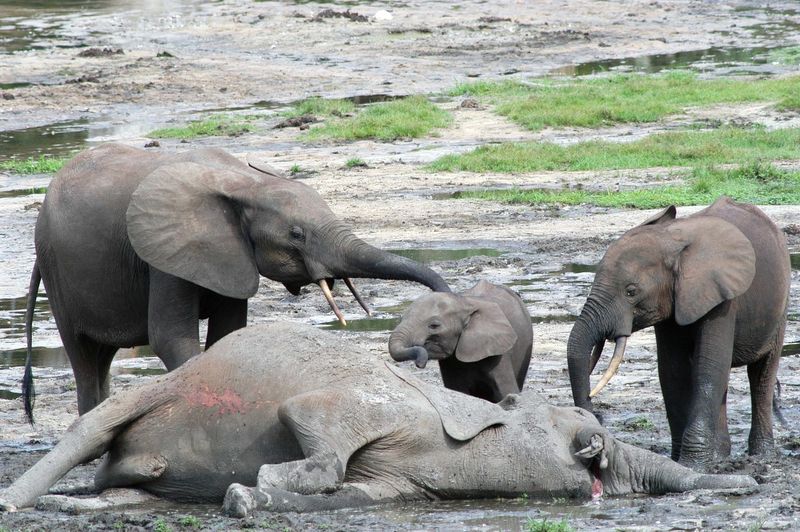
Elephants show remarkable responses to death that suggest emotional awareness. They’ll gather around deceased herd members, touching the remains with their trunks and sometimes covering bodies with branches and dirt.
Even more incredible, they’ll return to the site of deaths years later, examining the bones of former companions. This behavior highlights their exceptional memory and deep social connections that extend beyond life.
12. What It Means When Elephants Spread Their Ears
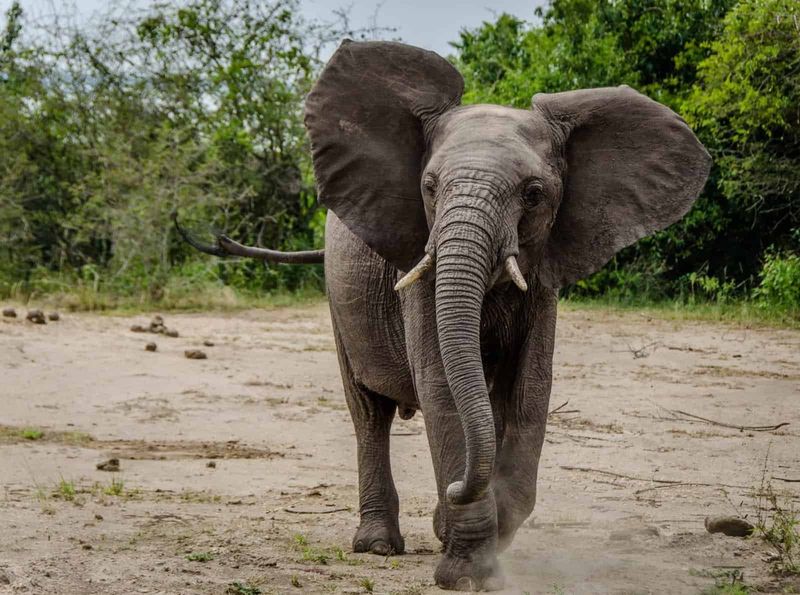
When an elephant spreads its ears wide like giant fans, it’s often trying to appear larger—a defensive posture meant to intimidate potential threats. This display can double their frontal size!
Safari guides watch this behavior carefully. If accompanied by head-shaking or foot-stomping, it signals discomfort with your presence. Respectful distance allows them to relax, eventually folding their ears back in a calm state.
13. Elephants’ Feeding Habits And Foraging Techniques

These gentle giants spend up to 16 hours daily eating, consuming nearly 300 pounds of vegetation! Their specialized trunk tips delicately pluck leaves or uproot entire trees depending on the season.
During dry periods, they’ll dig holes in riverbeds to access underground water. This ecosystem engineering creates water sources for other animals. On safari, watching an elephant’s methodical feeding offers fascinating insights into their patience and intelligence.




